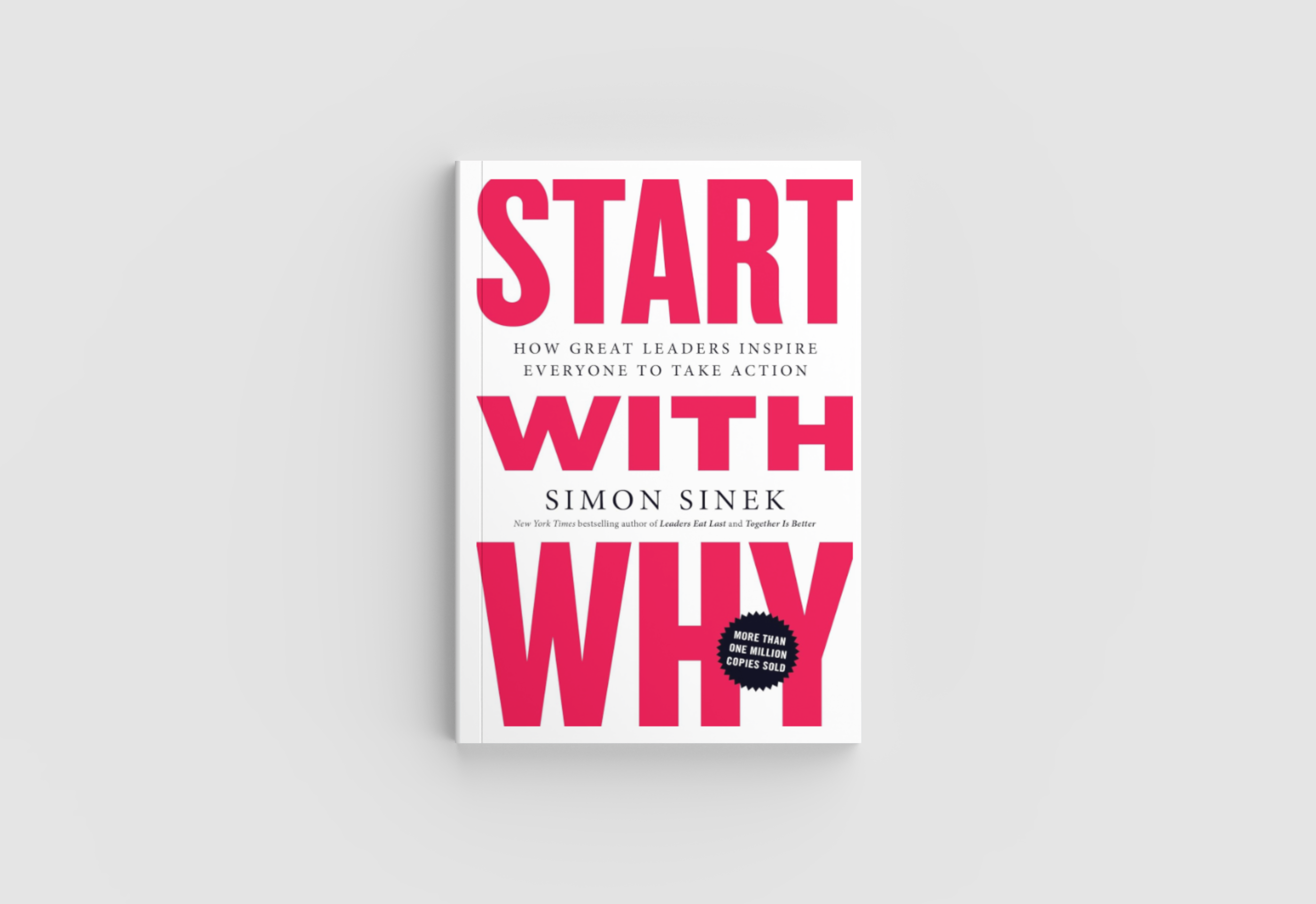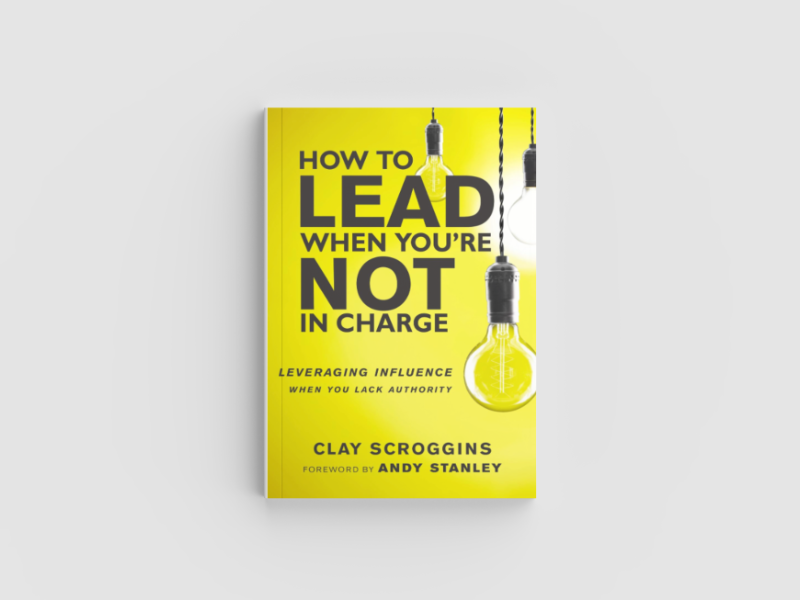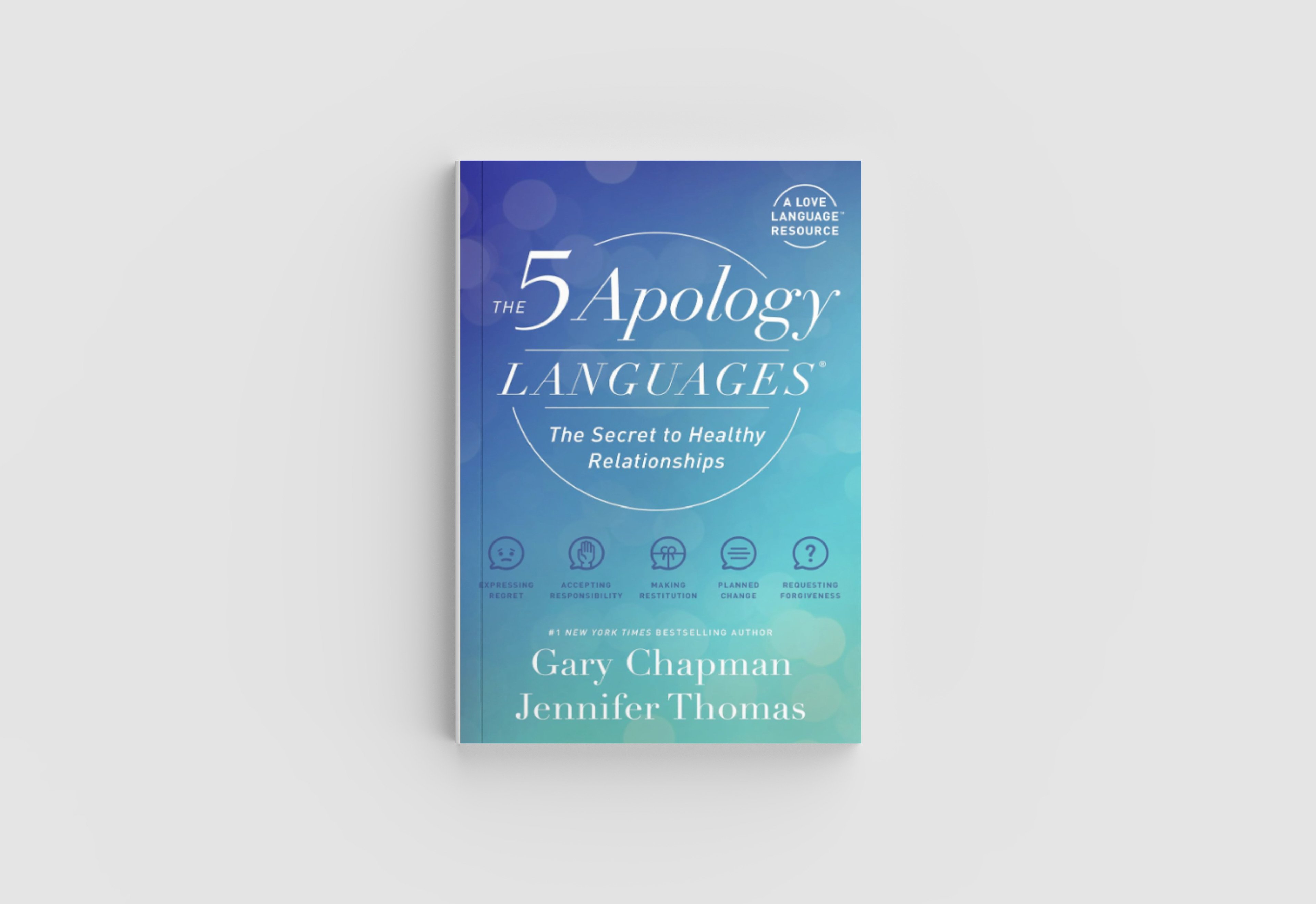How to Lead When You're Not in Charge: Leveraging Influence When You Lack Authority
This Month's Selection:How to Lead When You're Not in Charge: Leveraging Influence When You Lack Authority, by Clay Scroggins (Author), Andy Stanley...
6 min read
![]() Nicole R. Smith
Sep 18, 2024 9:00:00 AM
Nicole R. Smith
Sep 18, 2024 9:00:00 AM

This Month's Selection:
Start With Why – How Great Leaders Inspire Everyone to Take Action , by Simon Sinek
The nineteenth in a series of Better Impact Book Bites
A taste of great books worth consuming.
Have you ever been around a child who has asked you a question and no matter the answer you give them, they continually ask, “but why?” It can be a little annoying, but as you keep answering, you eventually get to the core of what they are asking (that is if you don’t get frustrated first and stop answering).
This book is the adult version of the child who kept asking “why?” to get to the core reason of exactly why we do what we do. It challenges the reader to ask questions about themselves such as “Who am I?” and “Why do I do what I do?” all with the clear purpose of obtaining profound clarity.
This book is 233 pages long, available on Audible and one is of THE most compelling books I have read in a very long time. It is craftily divided into 6 parts with a total of 14 chapters divided to support the heading of each section.
Preface: The Power of Why: I am generally not a fan of the preface in books. I have always thought, “What is the purpose? Just make it the first chapter?” Typically, I usually skip it, but in this case, it is crucial NOT to skip it. It really lays the foundation of the rest of the book. Understanding the power of why has the capability of changing the way you look at everything.
Introduction: Why Start With Why? The introduction builds upon the foundation of the preface. Now that you have a full understanding of the power of why, the introduction explains the importance of starting with WHY.
Chapter 1: Assume You Know – Well, we all know what happens when you ass-u-me something. If you aren’t sure, ask a friend. Sinek cautions us to do our best not to assume and why it can be so damaging.
Chapter 2: Carrots and Sticks – Manipulation vs. Inspiration. I found this chapter to be liberating. As a consultant I always felt burdened, having to do a tap dance of sorts, for customers to invest in me. As a leader of volunteers, I felt the pressure to develop an incentive plan worthy enough for volunteers to return. This chapter changed all that. When your WHY is solid and communicated effectively, you may still have to dance, but it will be more like a Waltz that inspires people to action instead of a tap dance purely for entertainment to try to convince someone to do something.
Chapter 3: The Golden Circle – A simple, yet profound concept. Easy in theory, but much more difficult in practice. However, once you understand how it works, the Golden Circle will be your litmus test for every product and/or organization you involve yourself with.
Chapter 4: This is Not Opinion, It Is Biology – I love results derived from data. This chapter explains why the Golden Circle concept works…and how it is directly related to our biological makeup. It reminds me of the book Wonder Drug that shared its results based purely on scientific evidence. Sinek doesn’t ask you to take his word for it, he uses science to validate his position.
Chapter 5: Clarity, Discipline and Consistency – A mentor of mine used to always say, “Clarity attracts and confusion repels (thank you Kary Oberbrunner)”. This chapter affirms that statement and takes it one step further, describing why only having clarity isn’t enough.
Chapter 6: The Emergence of Trust – Trust is essential. This chapter discusses how to earn and keep it as a leader. It also discusses once trust has been earned, the by-product is undying loyalty. This powerful, powerful chapter describes case studies of companies transitioning from ranking last in their industry to first, simply because they decided to instill and act upon trust as a core value.
Chapter 7: How a Tipping Point Tips – This chapter discusses the Law of Diffusion of Innovations and how it also relates to the diffusion of ideas. Think of it as the science behind the power of influencers. It sheds light on how, depending on the product, we fall in a different category on the bell curve and the best product on the market isn’t necessarily always the one that sells best. The chapter reiterates the importance of why the WHY is so important, and makes the case that if you refuse to consider the Law of Diffusion, it will cost your organization greatly.
Chapter 8: Start With the Why, BUT Know How – Once you are convinced of and understand the power of why, you have to know How. This chapter answers the question, “How do you rally those who believe in ‘your why’ into action?”
Chapter 9: Know WHY. KNOW How. Then WHAT? What happens after the why and how are in place? The WHAT is the tangible product and/or service that demonstrates the WHY. It is why businesses can have many different products, but they are only successful if each of those products/services is the answer to the company’s WHY. The WHAT you do can change with the times, but WHY you do it should never, ever change.
Chapter 10: Communication Is Not About Speaking, It’s about Listening – Many of us have heard this before. This actually ties in to the July Book Bites Everyone Communicates, Few Connect. Sinek discusses the powerful difference between a logo and a symbol and introduces the “Celery Test.” This test helps to keep your WHY in focus. It is especially helpful when bombarded with often well-meaning WHAT suggestions that, although great suggestions, may not be the right WHAT that supports your WHY.
Chapter 11: Why WHY Goes Fuzzy - This is a potent chapter that discusses what happens when you lose sight of your WHY. So many case studies show companies that were on top of the world, who lost sight of their why, and fell from grace because of it. Are we as leaders muddying the WHY for those we lead? Perhaps this is one reason we have trouble retaining volunteers, employees and/or donors? It’s a question to ask ourselves.
Chapter 12: Split Happens – This chapter explores two very important notions: The first, what gets measured gets done. Many of us have heard this before. The difference is this chapter sheds light on determining what gets measured. Many of us measure the what we do instead of the why we are doing it and that can make a significant difference. Secondly, this chapter reiterates the fundamental importance of making sure the WHY is deeply embedded into the succession plan. This was revelatory! Many people believe in succession plans, but the fact that the WHY wasn’t or isn’t embedded into it is evidenced by companies who seemed to have lost their influence once the founder was no longer at the helm.
Chapter 13: The Origins of a Why – This chapter takes you through the process of helping to discover, define and/or affirm your “why.” It starts with contemplative reflection of past experiences and failing forward.
Chapter 14: The New Competition – Sinek shares an inspiring story that taught him a valuable lesson. If you follow your WHY, others will follow you; regardless if you want them to or not. It will just naturally happen. He graciously shares his why, and when you look back at everything he does, it all makes sense (kinda like the phenomenal suspense movie The Sixth Sense).
🍽️ The Last Bite: During this career transition, I have been asked several times, “What is your value proposition?” and even “Why do you want to work for this company?” I struggled to answer both of these questions, that is until I finished reading this book. This book challenged me to understand my “why”, and the value I bring to this world.
It challenged me to really look at what my gifts are, what comes naturally to me and why I do the things I do. It helped me to figure out my why: “To inspire confidence in people to positively influence their world.” It is why I write this blog, consult, wrote my inspirational journals, host my podcast, conduct speaking engagements and create my online trainings.
Inspired, confident leaders incite significant positive change in an organization, and the ripple effect can eventually be felt in the community through all of its stakeholders. This is why I do what I do.
So, I ask you. What is your WHY? If you don’t know, I implore you figure it out. It will change how you move through life and ultimately positively affect the world on a whole for good.
Featured Posts

This Month's Selection:How to Lead When You're Not in Charge: Leveraging Influence When You Lack Authority, by Clay Scroggins (Author), Andy Stanley...

1 min read
This Month's Selection5 Apology Languages, by Gary Chapman and Jennifer ThomasThe fifteenth in a series of Better Impact Book BitesA taste of great...

This Month's Selection:Extreme Trust: Honesty as a Competitive Advantage, by Don Peppers and Martha Rogers, Ph.D. The twentieth in a series of...